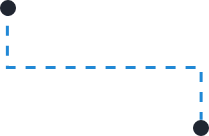Performance Enhancements
What are Performance Enhancements?
Performance enhancements for servers and websites involve implementing optimizations and improvements to enhance their speed, responsiveness, scalability, and overall efficiency.


Common Enhancement Techniques
- Caching: Caching involves storing frequently accessed data or web pages in a cache, allowing subsequent requests to be served faster. Implementing caching mechanisms, such as browser caching, content delivery network (CDN) caching, or server-side caching, reduces the load on servers and improves response times
- Content Optimization: Optimizing content involves techniques like compressing files (e.g., using GZIP), minifying CSS and JavaScript files, and optimizing images. These techniques reduce the size of files sent to clients, resulting in faster page load times and reduced bandwidth consumption
- Load Balancing: Load balancing distributes incoming network traffic across multiple servers, ensuring that the workload is evenly distributed. This improves server performance, scalability, and availability by preventing any single server from being overwhelmed with requests
- Database Optimization: Optimizing database queries, indexing, and schema design can significantly improve server and website performance. Efficiently retrieving and manipulating data reduces query execution times and improves overall system responsiveness
- Code Optimization: Optimizing the codebase by identifying and improving inefficient algorithms, eliminating unnecessary computations, and reducing code complexity can enhance server and website performance. Streamlining code execution leads to faster response times and better resource utilization
- Resource Scaling: Scaling server resources, such as CPU, memory, and storage, based on traffic patterns and workload demands, helps ensure optimal performance. Scaling can be achieved through vertical scaling (upgrading server hardware) or horizontal scaling (adding more servers to distribute the load)
- Content Delivery Networks (CDNs): CDNs distribute website content across multiple servers located in different geographic locations. This reduces the distance between users and the server, improving content delivery speed and reducing latency
- Performance Monitoring and Profiling: Regularly monitoring server and website performance using tools and techniques like performance profiling, load testing, and real-time monitoring helps identify bottlenecks and performance issues. This enables targeted optimizations and ensures ongoing performance enhancements
By implementing these performance enhancement techniques, you can provide your customers with faster, more responsive, and reliable servers and websites. Improved performance leads to better user experiences, increased user engagement, higher conversion rates, and overall customer satisfaction.
